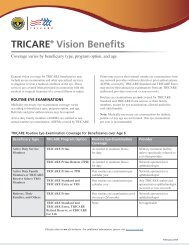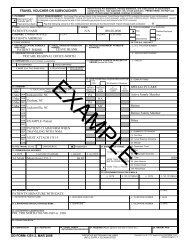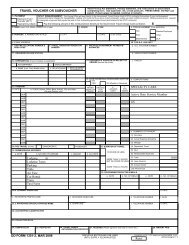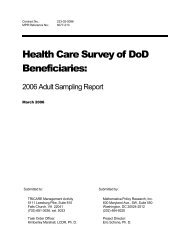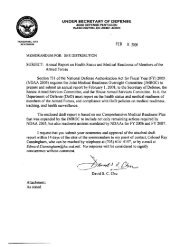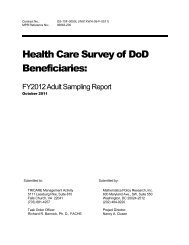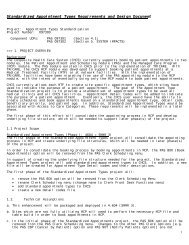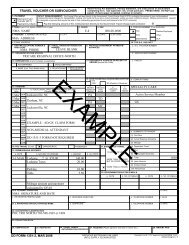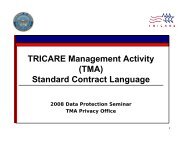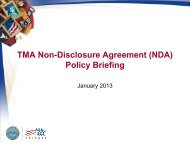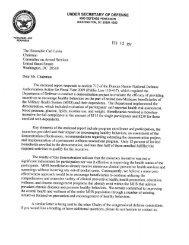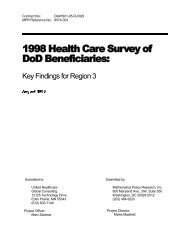Medical Management Guide, 2009, Version 3.0 - Tricare
Medical Management Guide, 2009, Version 3.0 - Tricare
Medical Management Guide, 2009, Version 3.0 - Tricare
- No tags were found...
Create successful ePaper yourself
Turn your PDF publications into a flip-book with our unique Google optimized e-Paper software.
<strong>Medical</strong> <strong>Management</strong> <strong>Guide</strong><strong>Version</strong> <strong>3.0</strong>Case <strong>Management</strong>Page 61Given the environment in which the ADSM isemployed and the various regulations that governa Service member’s employment, military casemanagers need to be knowledgeable about:• Characteristics of the beneficiary populationcompared with the general U.S. population.• Military regulations and policies —operational requirements may affect internalCM processes, locations for care, or caredelivery timelines.• The transient nature of the military populationworldwide and within different Services.• The presence of multiple MCSCs.• Special populations that require CMintervention (i.e., wounded warriors).Further, military-specific designations, programs,and offices may influence CM processes (examplesare listed in Fig. 14).Military case managers also must understand theTRICARE benefit and how other health benefitprograms interface with TRICARE (see SectionI, <strong>Medical</strong> <strong>Management</strong> Essentials, TRICAREand Other Benefit Programs). Case managerscan help patients secure the greatest possiblebenefit by demonstrating knowledge of eligibilityrequirements associated with these programs;patient/family preferences, financial situation, anddegree of access to services; and expected level offamily/caregiver support.CD-ROM Resources CM-1 and CM-2 presentarticles related to military CM. See also RecoveryCoordination Initiatives, later in this section.Military-Specific Programs*• Active Duty <strong>Medical</strong> Extension (ADME) – Army,Reserves• Active Duty member casualty/Wounded WarriorProgram – All service branches• Assignment to <strong>Medical</strong> Hold• Command-directed programs• Convalescent leave• Special Needs Assignment IdentificationCoordination (SNAIC) – Air Force• Extended Care Health Option (ECHO)• Fitness for Duty• Geographically Separated Units (GSUs)• Limited Duty - Navy• Line of Duty (LOD) investigations – All servicebranches• Mandatory TRICARE enrollment requirements• <strong>Medical</strong> Evaluation Board (MEB)• Physical Evaluation Board (PEB)• <strong>Medical</strong> Retention Processing/ReserveComponent –Army• Military <strong>Medical</strong> Support Office (MMSO)• Non-traditional beneficiaries entitled to militarymedical care (i.e., secretarial designees, refuges,NATO members)• Patient tracking relative to absent sick status– Army• Post-Deployment Health Assessment (PDHA)• Post-Deployment Health Re-assessment (PDHRA)• Temporary disability retired list (TDRL)• Warrior Transition Unit (WTU) – Army• Warrior Transition Battalion / WTB*See also Appendix C - DefinitionsFig. 14 – Military-Specific Designations, Programs, andOffices



